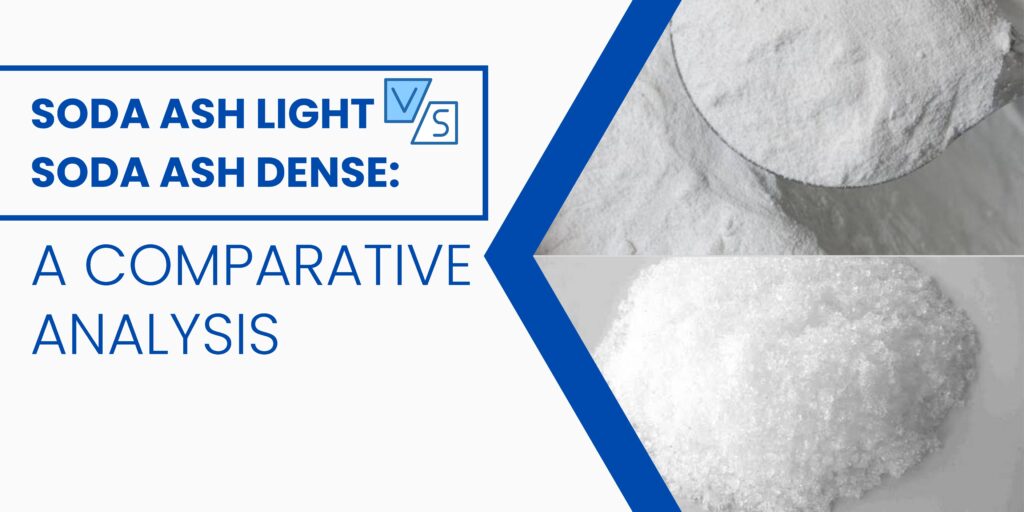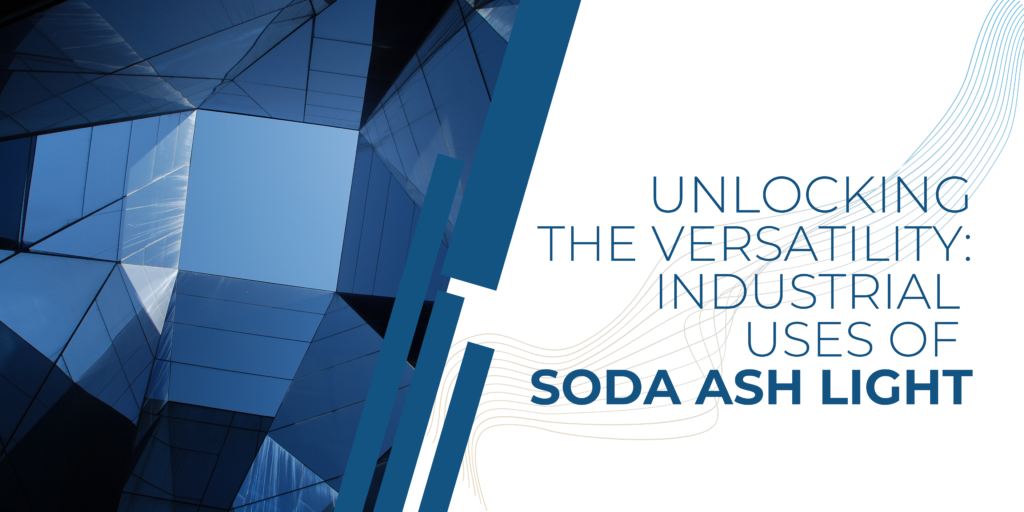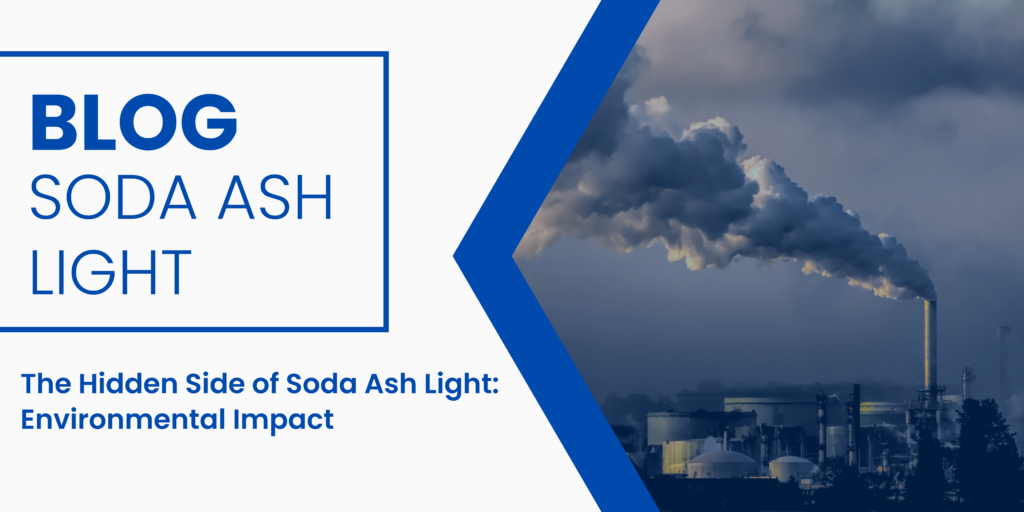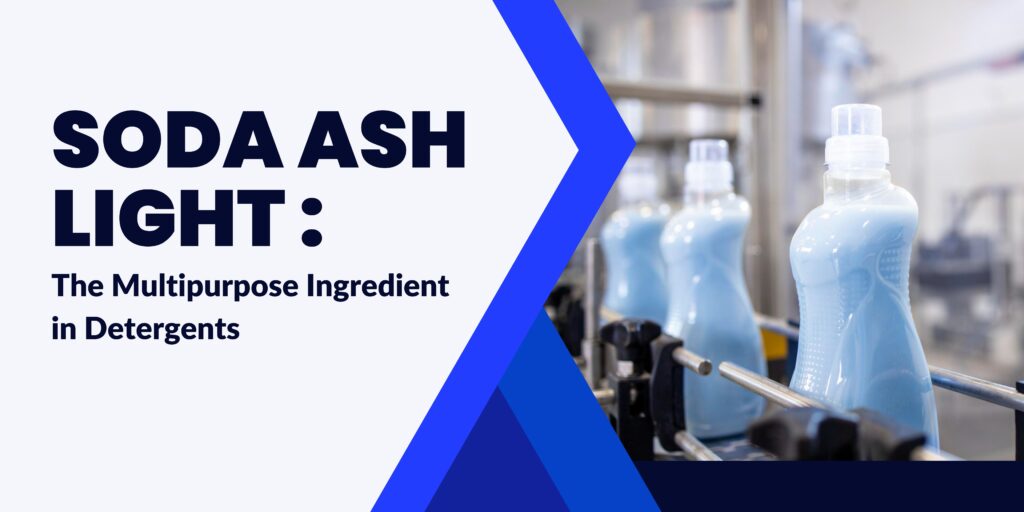
Soda ash, chemically known as sodium carbonate, is a versatile and indispensable compound used across various industries. It finds applications in glass manufacturing, detergents, water treatment, metallurgy, textiles, and more. One critical aspect in understanding soda ash lies in its different forms: soda ash light and soda ash dense. In this article, we will delve into a comparative analysis of soda ash light and soda ash dense, exploring their differences in composition, properties, applications, and production processes.
Composition and Properties
Soda Ash Light
Soda ash light is a white, odorless, and granular powder. Its chemical formula is Na2CO3. It has a lower density compared to soda ash dense, giving it its name ‘light.’ The molecular structure of soda ash light includes two sodium (Na) atoms, one carbon (C) atom, and three oxygen (O) atoms.
Soda Ash Dense
Soda ash dense, on the other hand, is a white, odorless, and granular powder with a higher density. Its chemical formula is the same as soda ash light, Na2CO3. However, its particles are denser due to its manufacturing process, making it ‘dense’.
Production Process
Soda Ash Light
Soda ash light is typically produced through the Solvay process. In this method, sodium chloride (NaCl), ammonia (NH3), water (H2O), and carbon dioxide (CO2) are the main raw materials. The process involves several steps, including brine purification, sodium bicarbonate production, soda ash calcination, and ammonia recovery. The final product, soda ash light, is obtained in a relatively pure form, suitable for various applications.
Soda Ash Dense
Soda ash dense is also produced using the Solvay process, but with a modification in the calcination stage. The process involves higher temperatures and longer calcination times, resulting in a denser product. The increased density is due to the compacted structure of the particles, which allows for more soda ash to be packed into each unit volume.
Comparative Analysis
Density and Granule Structure
The primary difference between soda ash light and soda ash dense lies in their densities and granule structures. Soda ash light has a lower density and a more porous granule structure, making it lighter in weight and allowing for faster dissolution in water. In contrast, soda ash dense has a higher density and a more compact granule structure, making it heavier and slower to dissolve in water.
Solubility
Due to its granule structure, soda ash light has higher solubility in water compared to soda ash dense. This characteristic makes soda ash light preferred in applications where quick dissolution is essential, such as in the production of detergents and water treatment.
Usage and Applications
Soda ash light and soda ash dense have different applications based on their properties. Soda ash light is commonly used in industries like the production of glass, detergents, textiles, and food. Its quick solubility and versatility make it suitable for a wide range of applications. On the other hand, soda ash dense finds application in industries where slower dissolution is acceptable or preferred, such as in metallurgy and certain chemical processes.
Environmental Impact
Soda Ash Light
Soda ash light production is generally considered to have a lower environmental impact compared to soda ash dense. The Solvay process, used to manufacture soda ash light, typically requires less energy and generates fewer byproducts. Additionally, the lighter granule structure allows for more efficient transportation, reducing carbon emissions associated with shipping.
Soda Ash Dense
The production of soda ash dense involves higher temperatures and longer calcination times, leading to increased energy consumption and potentially higher environmental impact. The denser granule structure also results in more energy-intensive transportation, contributing to a higher carbon footprint.
Cost Comparison
Soda ash light is usually more cost-effective to produce due to its less energy-intensive manufacturing process and lighter granule structure. The lower density allows for easier handling and transportation, reducing overall production costs.
Soda ash dense, while having a higher production cost due to the additional energy required during calcination, may still be preferred in applications where its slower dissolution rate and denser granule structure are advantageous.
Market Demand and Trends
The market demand for soda ash, both light and dense, has been steadily increasing due to its extensive use across multiple industries. The demand for soda ash light is often higher due to its versatility and faster dissolution rate, especially in rapidly growing industries such as detergents, textiles, and water treatment.
However, soda ash dense continues to have a steady demand, particularly in industries where its properties are beneficial, such as in metallurgy and certain chemical processes. Market trends also indicate a growing emphasis on sustainable production methods and increased usage of soda ash in eco-friendly applications, influencing production decisions for both variants.
Future Prospects
As industries continue to evolve and prioritize sustainability, the demand for soda ash light, with its more environmentally friendly production process and versatile applications, is expected to grow further. Research and development efforts are likely to focus on optimizing production processes to enhance efficiency and reduce environmental impact.
Soda ash dense, while facing challenges due to its higher environmental impact and slower dissolution rate, may see advancements in manufacturing technologies to mitigate these concerns and maintain its relevance in specific industrial applications.
Conclusion
Soda ash light and soda ash dense are essential compounds with distinct characteristics, applications, and environmental implications. The choice between the two variants depends on various factors, including the intended application, cost considerations, solubility requirements, and environmental concerns.
Understanding these differences is crucial for industries and consumers to make informed decisions based on their specific needs and contribute to a sustainable and efficient utilization of soda ash in diverse sectors. As technologies continue to advance and environmental consciousness grows, the soda ash industry will likely adapt to meet the evolving demands of a changing world.




